AI at Work
Content Personalization Best Practices to Personalize Copy for Specific Audiences

Neelam Goswami · Content Marketing Associate
February 12th, 2025 · 16 min read

In enterprise marketing today, standing out is no longer about shouting the loudest but rather saying exactly what your audience wants to hear. Content personalization plays a massive role in making or breaking your campaigns. Just as enterprise solutions are tailored to specific customer needs, content must be dynamically adapted across the complete buyer journey too. A Deloitte survey found that brands excelling at personalization tend to have 71% better customer loyalty and are 48% more likely to exceed their revenue goals than others.
Personalized experiences have been driving our decisions in everyday life, from what we watch on Netflix to what we listen to on Spotify, with their personalized recommendations. That's the kind of experience personalized content aims to create for audiences in the enterprise marketing world too. With increasing demands for meaningful engagement, marketers must focus on crafting content that speaks uniquely to everyone's preferences, needs, and challenges - whether that's addressing organizational pain points for B2B buyers or crafting personalized ads for retail consumers.
The limitations of manual personalization methods
How AI enhances content personalization capabilities
Content personalization best practices to follow
Personalization strategies for specific content types
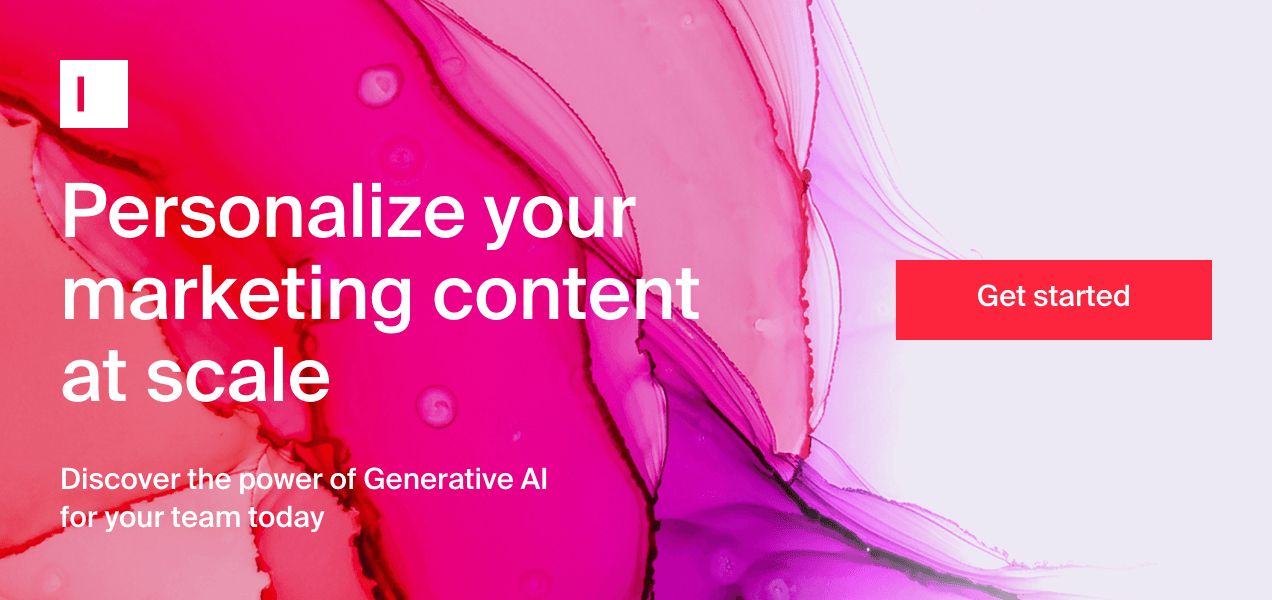
The limitations of manual personalization methods
Manual content personalization has always been an uphill battle for marketers - countless hours spent manually tweaking content to suit different audience segments, adjusting language, tone, and messaging for each persona. This approach, while well-intentioned, is arduous and often leads to only broad segmentation. With limited resources, marketers could often only produce a handful of tailored content pieces, making it hard to scale. This resulted in more of a "one-size-fits-most" strategy. The manual process is also often prone to inconsistency and human error, making it challenging to maintain a cohesive brand voice across various content versions. In short, for all the time and energy it consumes, manual personalization offers limited returns, leaving marketers in need of a more scalable solution.
How AI enhances content personalization capabilities
AI content personalization enables marketers to overcome these limitations, dynamically adapting messages to align with different audience personas at scale. With an AI content creation platform for enterprises, like Typeface, businesses can easily save various Audience Segments on the platform and apply them when generating content, thus, creating multiple variations that speak directly to the unique needs and characteristics of each customer segment. It analyzes data such as demographic info, purchasing behavior, interests and preferences, crafting personalized experiences for every stage of the customer journey.
With Typeface, businesses are also ensuring that their content is true to their brand by saving and applying Brand Kits that define their unique brand voice and branding guidelines.
Content personalization best practices to follow
As enterprises scale beyond traditional mass-marketing approaches, implementing precision content strategies has become imperative for maintaining competitive advantage. The following framework outlines content personalization best practices for improving content delivery across complex customer segments and multiple touchpoints.
Customer data collection and management
Sophisticated customer intelligence is the key to enterprise-scale personalization initiatives. By investing in data collection across digital touchpoints, transaction systems, and engagement platforms, organizations can build comprehensive customer profiles that drive their content personalization efforts. Enterprises should prioritize the integration of first-party data from owned properties, second-party data from strategic partnerships, and carefully vetted third-party data sources to create a unified customer view. This multi-dimensional data architecture, when properly governed by robust privacy frameworks like GDPR and CCPA, enables efficient personalization based on both historical patterns and predictive analytics.
Key to this approach is the implementation of enterprise-grade Customer Data Platforms (CDPs) that can process high-velocity data streams while maintaining data quality and regulatory compliance. Typeface integrates seamlessly with your CDPs allowing you to easily import existing customer segments, enabling more precise and accurate targeting.
Customer segmentation
While Customer Data Platforms make this task easier for you, it is important to know the significance of customer segmentation nonetheless. Deploying advanced audience segmentation frameworks that capture behavioral signals, firmographic data, and purchasing patterns across your ecosystem can give you much needed insights for predictive modeling.
To further enrich your customer intelligence, you may want to identify micro-segments by mapping customer journey velocities, identifying segment-specific conversion triggers, and understanding cross-channel engagement patterns.
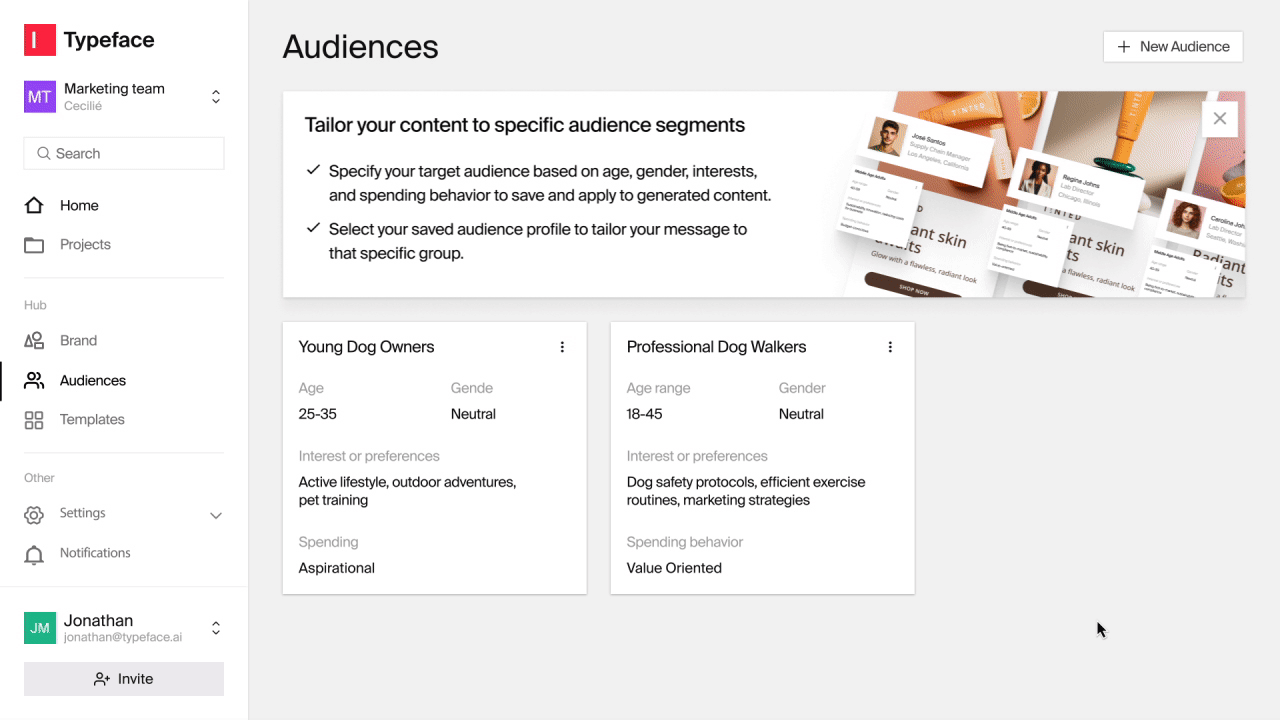
Save and apply audience segments on Typeface
These enriched audience personas can inform not just content strategy, but also channel selection, timing optimization, and other aspects of your marketing campaigns.
Content mapping with customer journey
Design your content strategy around key moments in the customer lifecycle to deliver the right content at the right time. Create a flexible content framework that adapts to how your customers actually make decisions, whether they follow a traditional path or take a more complex route to purchase.
Build your content mapping strategy around these core elements:
Industry-specific buying patterns and decision-making processes
Customer preferences for different content formats across channels
Individual and account-level engagement patterns for B2B relationships
Customer value indicators and loyalty status
Market-specific compliance requirements
Use analytics to understand which content drives results at each stage moving customers forward in their journey. Then use AI to create such content at scale. Typeface, for instance, offers AI templates to help you create Blog Posts, Emails, Ads, and more, tailored to each audience segment and the stages in their journey. With AI delivering solid first drafts, your content team can spend more time on editing and further enriching the content with personal anecdotes, real-life examples, and customer stories to make the content truly useful for the stage they're at in their buying journey.
Cross-channel brand consistency
No matter who you’re creating the content for or which channel it goes on, your content must be guided by your brand identity. Building a cohesive brand image is key to a good customer experience across your global marketing operations. Ensure consistency whether it is in your email campaigns, digital ads, social content, or website.
Create brand guidelines that:
Keep core messaging consistent while adjusting tone for different audiences
Work effectively across global markets and cultures
Enable fast content production while protecting brand integrity
Meet both global brand standards and local market needs
Leading enterprises are using Typeface's Brand Kit feature to achieve this. With Brand Kit, you can save your brand guidelines and rules on the AI platform ensuring that all the content generated, text and visual, adhere to your brand framework. In your Brand Kits, you can define image styles, color palettes, logos, text styles, email layouts, and more. You can also train the AI on your brand voices and save multiple voices to use in your generations. For instance, you can save your CEO's voice to use in thought leadership articles and company updates, you can save your social media brand voice for generating LinkedIn or Facebook posts, and so on.
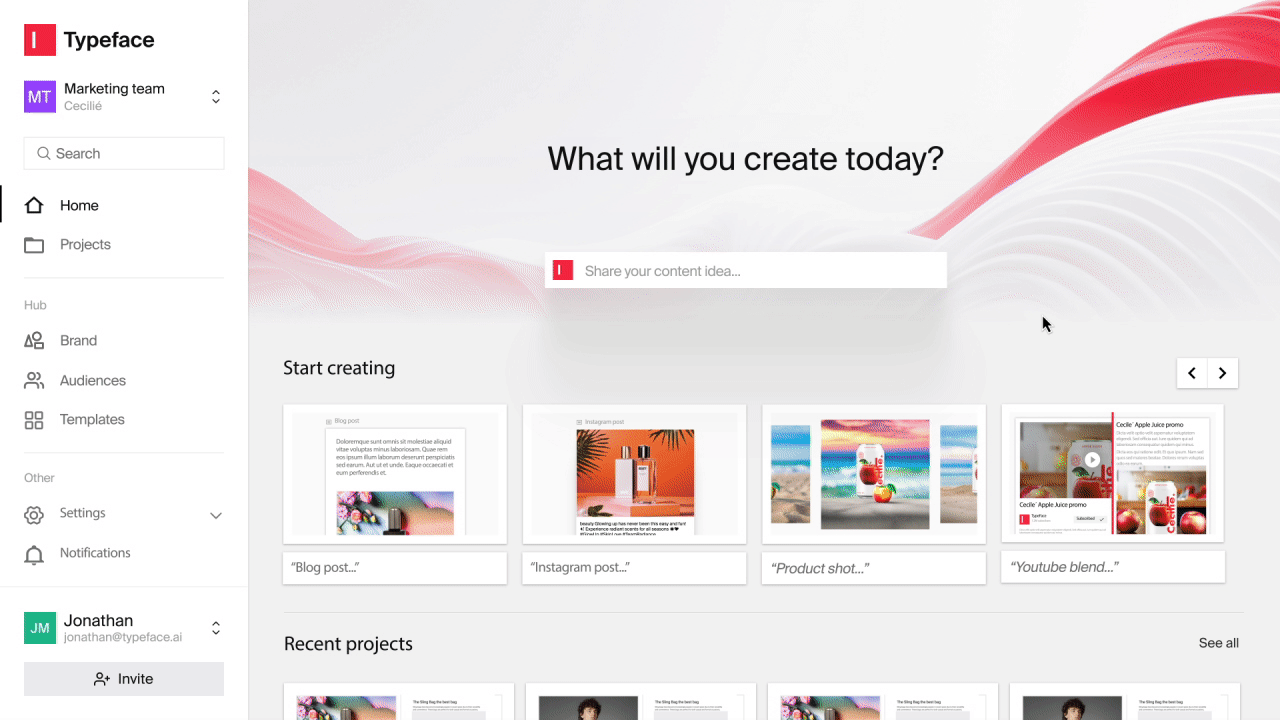
Train Typeface's AI on your brand voice and guidelines
This structured approach to brand alignment ensures that as you expand your personalization efforts, every customer touchpoint strengthens your brand.
Content localization strategy
Content personalization is not just about catering to individual interests and preferences, but also about strategic localization that fosters a culture of inclusion and representation. Content localization could include language translation, customizing your content (visual and written) to reflect local settings and customs, and continuously monitoring which campaigns strike a chord with the audience. By speaking in your target audience’s language and acknowledging local customs, you create more genuine connections, building an inclusive brand presence globally.
Typeface can help you scale the production of localized, personalized content by generating custom copy and visuals tailored to specific audiences in specific markets. The powerful AI translation capabilities allow you to translate copy into any major language 5 to 10x faster than traditional translation methods. It also reduces the chances or errors and inconsistencies, while ensuring that the core message is kept intact. You can also generate content from scratch in your preferred language by simply changing the default language under Settings.
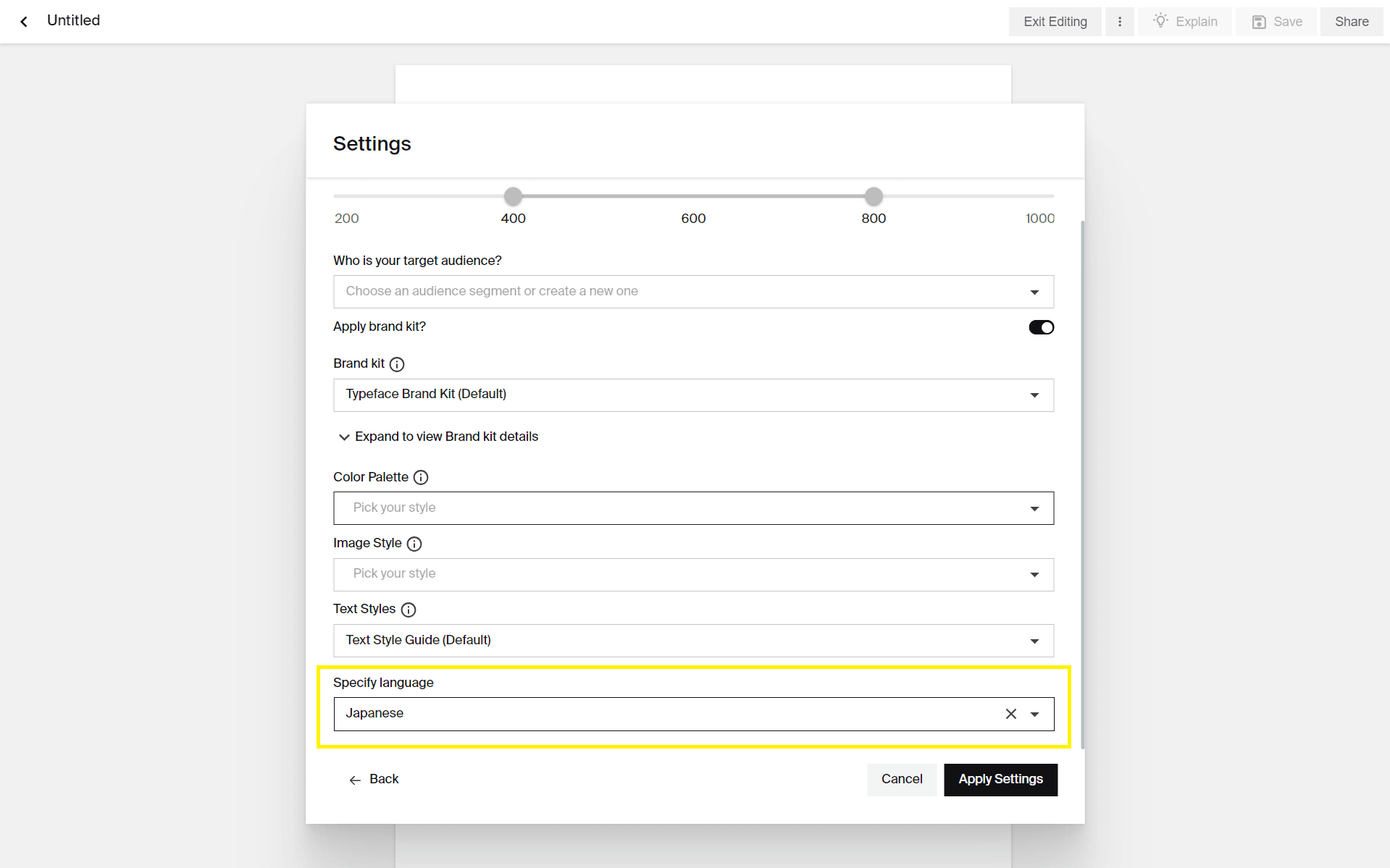
Typeface’s content localization capabilities, go beyond just text. You can also generate images customized for different markets, without having to spend thousands of dollars to shoot on location. Using our Visual Inspiration Studio or starting with a blank canvas and powerful AI image prompt, you can generate visuals tailored to your target market.
That’s not all. Our AI can also adapt your existing content for different markets, allowing you to quickly create multiple localized variations from a single approved version.
Creative Automation on Typeface allows you to transform an already approved ad creative into various formats while preserving the design's integrity. Additionally, you can bring in pre-approved headlines, translated text, and brand elements to quickly produce numerous campaign variations, eliminating the need for repetitive design tasks like manually resizing or rewriting ads.
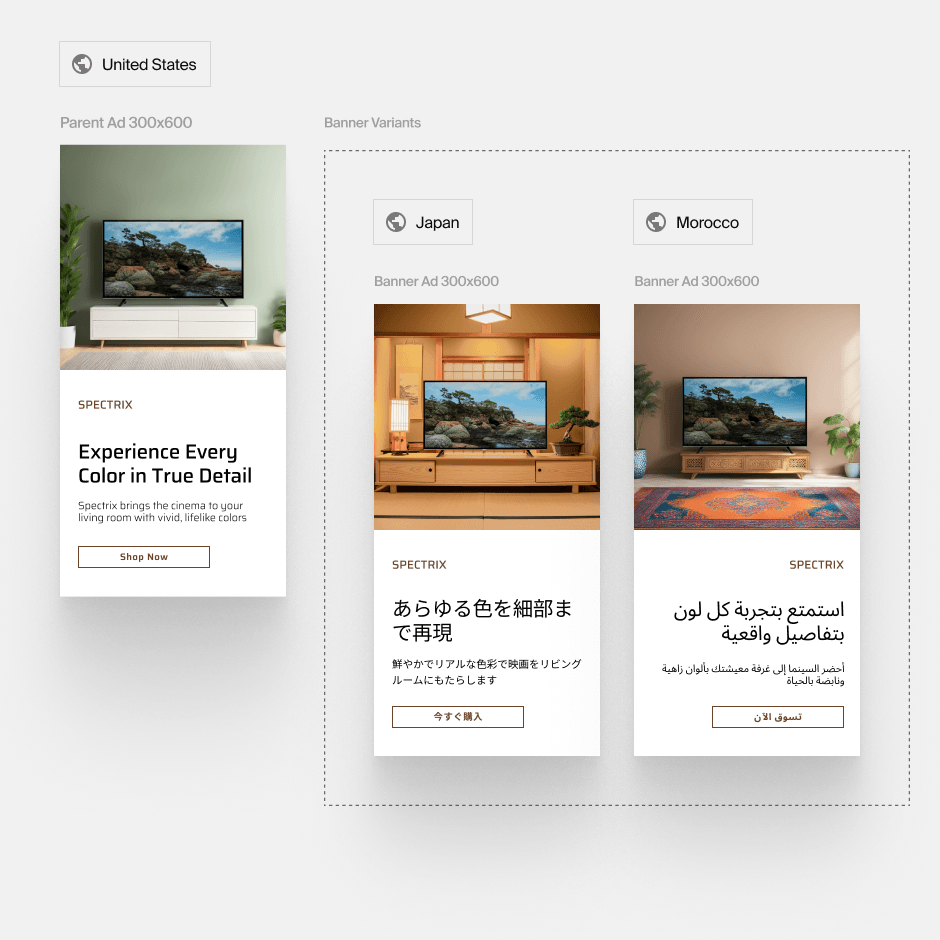
Adapting an ad for different markets with Creative Automation
With AI making localized content production much faster, you can easily test various campaigns for each geography to see what works better in which market, giving you further insights into audience preferences and expectations.
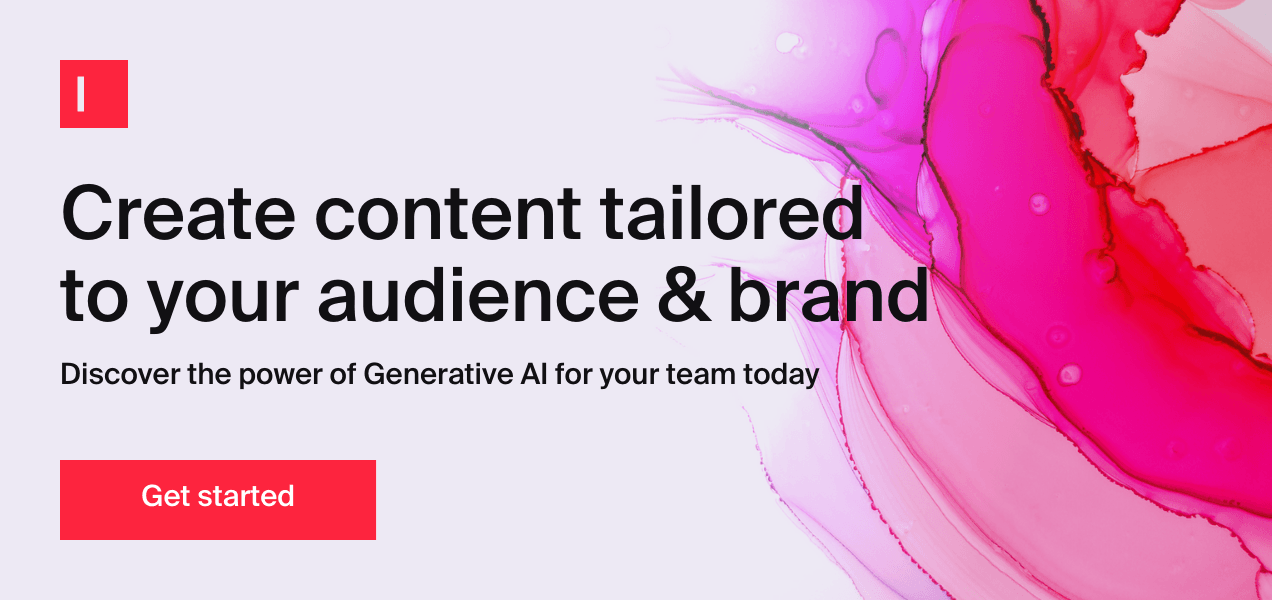
Contextual relevance of content
In content personalization, context is crucial in delivering meaningful and relevant messages. Understand the environment and circumstances your audience operates in and tailor your messages accordingly.
Let's say you're a software company selling project management tools. A customer who repeatedly views your resource planning features during evening hours (US time) but is based in Europe might be managing global teams across time zones. With this context, you could send them content about remote team collaboration, highlight calendar features that make scheduling across time zones easier, share case studies of other companies successfully managing international teams with your software, and so on.
This is much more relevant and valuable than sending them generic content about project management or featuring your task-tracking tools, which they might not need as urgently.
Put your existing marketing knowledge to work with AI. Your team's research, briefs, and insights can directly inform your content creation by providing deeper context for AI to analyze. With Typeface, you have the option to upload reference documents or URLs when using our AI templates. This helps our AI understand your subject matter better and create content that is contextually relevant.
Integrated tech stack
An integrated tech stack helps streamline your personalized marketing efforts. Use tools that enable seamless data collection, analysis, and content delivery across various platforms. Integration of CRM, marketing automation, and analytics tools enables a more cohesive approach.
Typeface's extensive Connector Library lets you effortlessly automate your AI content workflow with seamless asset management, data management, content management, and more. Our partner ecosystem also boasts of some strategic partnerships with industry giants like Google, Microsoft, and Salesforce so that you can easily work with your existing data while leveraging our AI capabilities wherever you work.
Personalization strategies for specific content types
Email personalization best practices
Personalization in email marketing has evolved from being just a competitive advantage to a business imperative. Strategic use of customer data — including professional roles, industry specifics, and engagement patterns — enables the creation of targeted communications that can drive tangible business outcomes.
Some email content personalization strategies worth
Personalized subject lines: According to reports, 64% of recipients open an email based on the subject line. Emails with personalized subject lines can significantly boost open rates by grabbing attention in crowded inboxes. Use the Email Subject Line template on Typeface to get multiple versions of audience-personalized subject lines to choose from.
Create emails tailored to customer journeys: For multi-step email marketing campaigns, you need to create email sequences covering the entire customer journey. From welcome emails to cart abandonment emails to loyalty program emails, you must ensure that a customer is engaged at every stage. Typeface Arc is built to generate entire email journeys tailored to your audience personas. Being a multimodal AI platform, it doesn’t just give you copy for your emails but also on-brand banners, pre-headers, in-line images, and more.
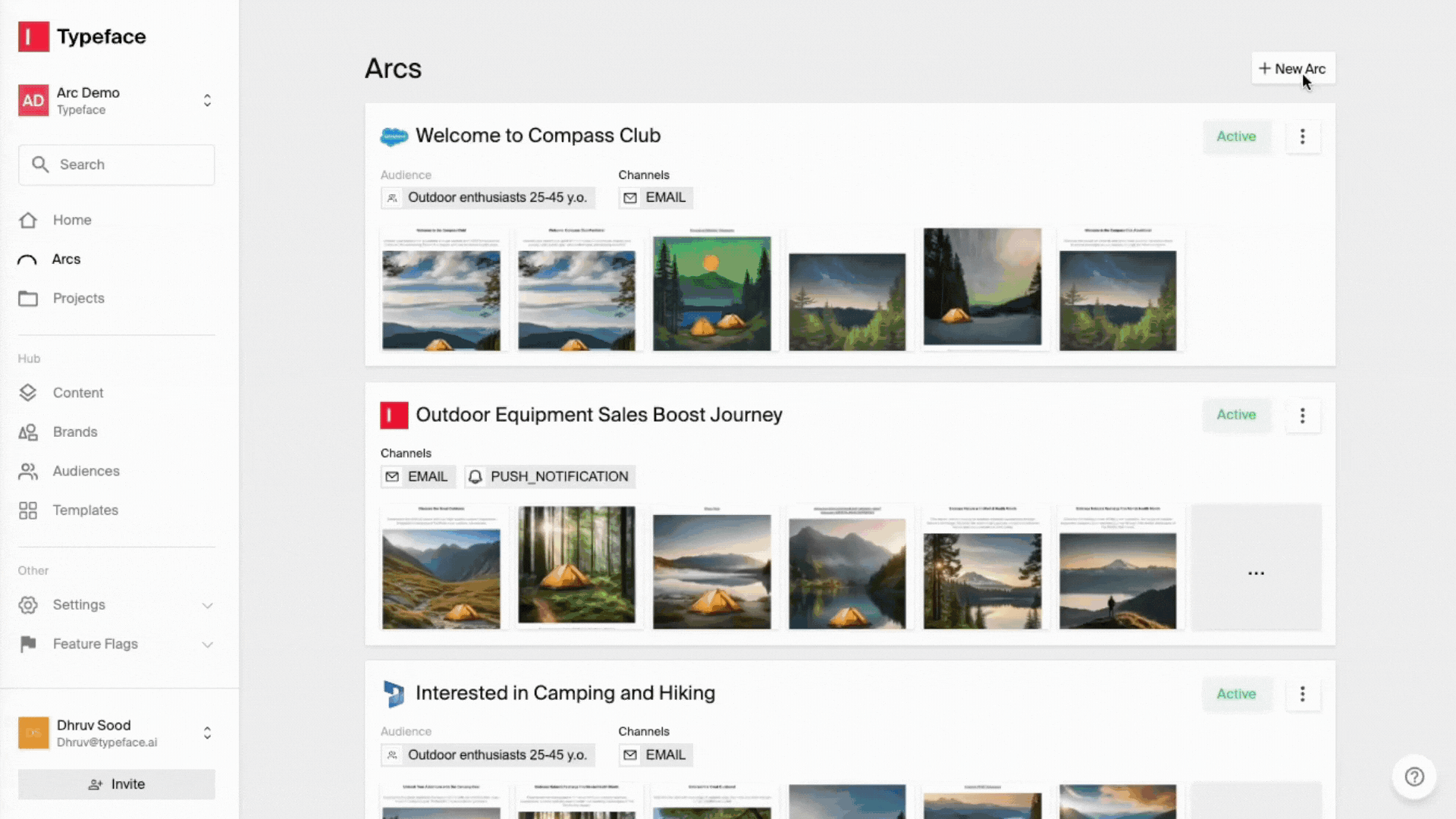
A/B test your emails: The best way to analyze the performance of your email personalization efforts is by A/B testing. Test out emails with different subject lines, CTAs, visuals, and so on to see which ones garner the best response from recipients. Typeface can make this faster with its AI email marketing tools, allowing you to quickly generate multiple variations and run more tests across different platforms.
Ad personalization best practices
Advertising personalization focuses on delivering targeted messaging to specific user segments, driving engagement and conversions.
Data-driven ad targeting: Use demographic data and user behavior insights to target ads more accurately. Platforms like Google Ads or Facebook enable you to focus on narrow audience segments.
Personalized messaging: Adapt your ad copy and visuals to speak directly to the needs and wants of your target audience. Incorporate relevant keywords and value propositions that resonate. On Typeface, you can create targeted ad copy tailored to the platform you're advertising on using any of the AI ad generator templates. Templates such as Google Ad, Google Responsive Display Ad, or Facebook Ad can generate personalized ad copy and creatives in the required format, which you can also preview and publish directly from Typeface.
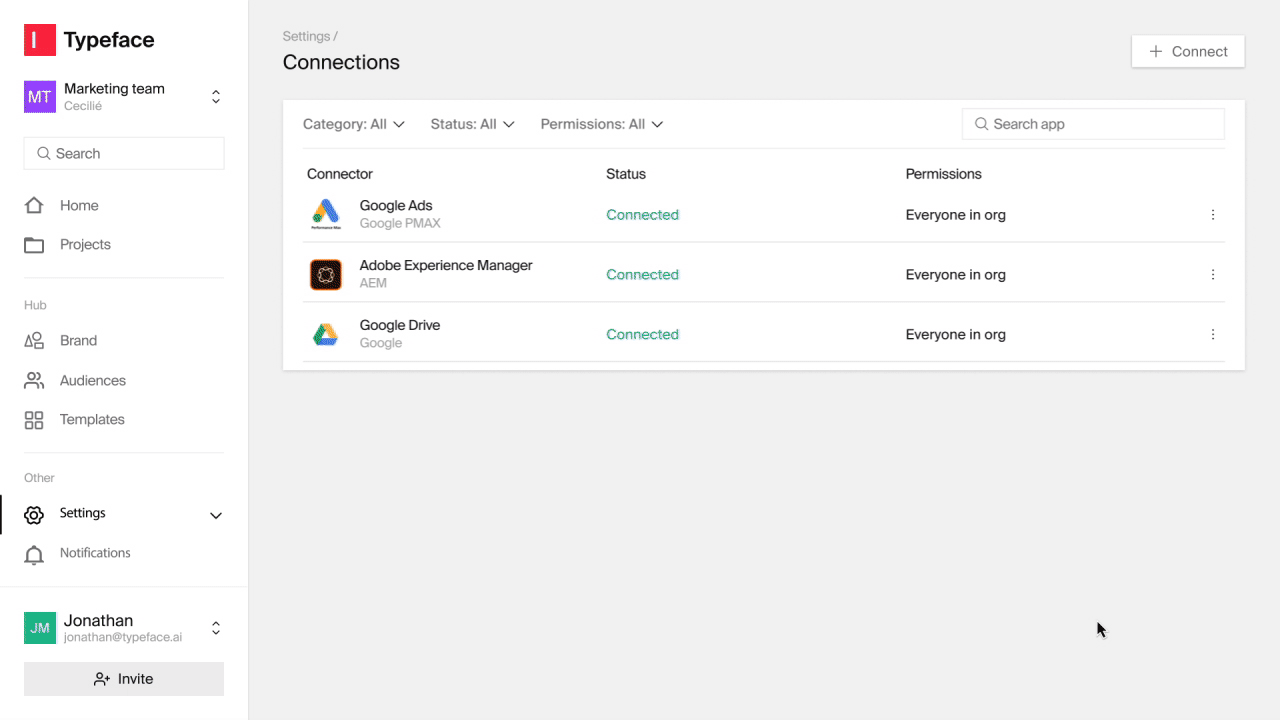
Experience testing: Leverage A/B testing to assess which ad creatives and copy perform best with different audience segments, ensuring that each group receives messaging that resonates. Audiences expect different experiences based on the platform or region they are in, making it crucial to adapt your campaigns quickly for different markets. Use Creative Automation on Typeface to generate multiple variations of ads for different formats or markets to accelerate testing.
Blog content personalization best practices
In the case of blogs, the key is to strike a perfect balance between content personalization and search engine optimization. Your blog content has to reach the masses by ranking in search, while also resonating with the target audience. This involves crafting high-quality articles that answer the burning questions of different personas and address their unique needs.
Typeface's AI templates can give you brand and audience personalized first drafts in minutes for your team to edit and enhance, thus cutting down blog production time by 50 to 90%.
Create content clusters for different audience segments: Mapping content to specific pain points and objectives of key stakeholders will give you a clear idea of what kind of blog posts to create. For example, a CTO may require detailed technical architecture discussions, while a CFO needs ROI analysis and cost optimization insights. Create content clusters for each audience segment to ensure that your blog engages everyone equally.
Targeted recommendations: Offer content suggestions at the end of articles based on the reader's previous interactions with your blog or based on the cluster they're on, encouraging further engagement.
Voice and tone adaptation: Adjust the language and tone of your blogs to suit different audience segments, whether it be more formal for a tech-savvy crowd or casual for lifestyle readers. On Typeface, you can easily achieve this by training the AI with different brand voices.
Drive engagement and action with personalized content
With the advanced capabilities of AI and data analytics, marketers can now create deeply personalized experiences that resonate with each audience segment on a deeper level. This level of personalization encourages higher clicks, open rates and engagement, ultimately driving better business outcomes.
So, if you haven't yet, let's start weaving personalization into every facet of your marketing strategy. Get started free or get a demo of Typeface to understand how our brand-personalized AI helps you craft tailored content for every audience segment.
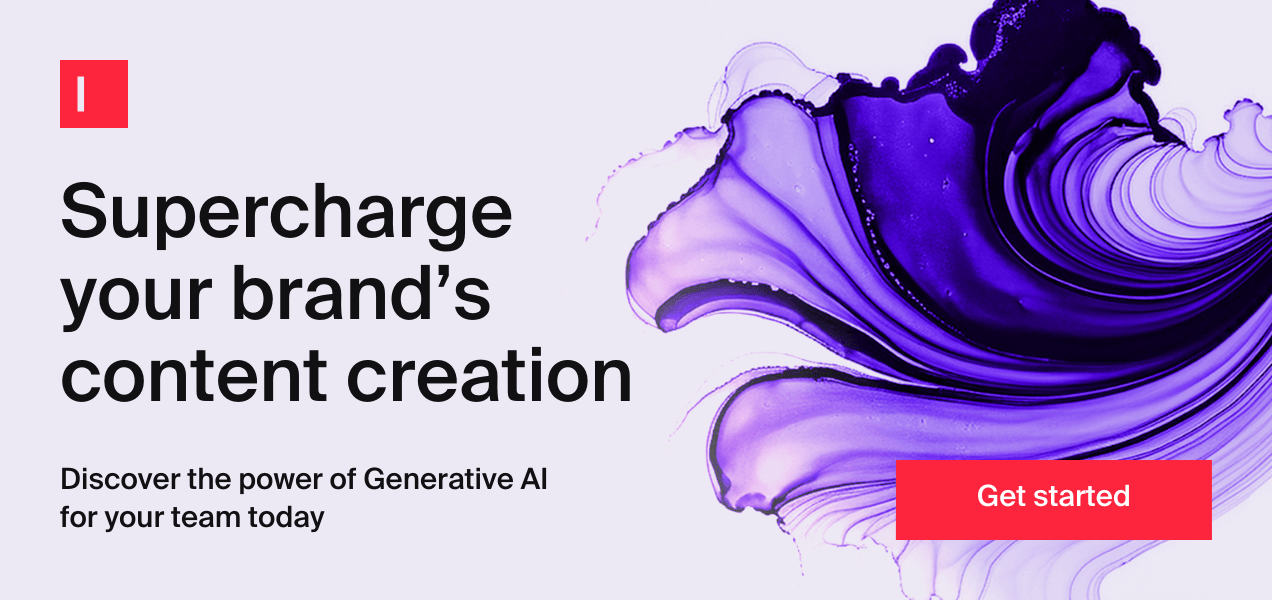
Share
Related articles

AI at Work
5 Marketing Email Examples You Can Recreate with AI Email Generator

Akshita Sharma · Content Marketing Associate
February 5th, 2025 · 14 min read

AI at Work
7 Generative AI Use Cases in Enterprise Marketing

Neelam Goswami · Content Marketing Associate
November 12th, 2024 · 15 min read

AI at Work
AI Personalization in Marketing - Creating Tailored Content for Diverse Audiences

Neelam Goswami · Content Marketing Associate
November 28th, 2024 · 11 min read